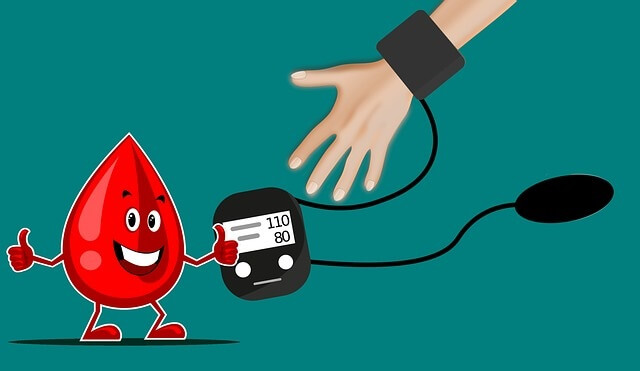A diagnostic center is a medical facility that specializes in the diagnosis of illnesses and injuries through a variety of medical tests and procedures. These centers may offer a wide range of services, including imaging (such as X-rays, CT scans, and MRIs), laboratory testing (such as blood and tissue analysis), and other diagnostic procedures. They may be part of a hospital or be independent facilities. They are staffed by medical professionals such as radiologists, pathologists, and technologists who interpret the results of the tests and provide the diagnosis to the patient’s physician.
What is MRI, CT Scan, and XRay in Health Checkup
All three imaging tests, MRI, CT scan, and X-ray, have their own unique advantages and disadvantages. The choice of which test is best for a particular individual will depend on their specific medical condition, their symptoms, and the information that the physician needs to gather.
CT scan (Computed Tomography) is a type of x-ray test that produces detailed images of internal organs and other structures in the body. CT scans are particularly useful for identifying bone fractures, tumors, and other abnormalities in the body. They are also useful in detecting internal injuries and monitoring the progression of certain diseases. However, CT scans use ionizing radiation, which can increase the risk of cancer over time.
X-rays are a form of electromagnetic radiation that can pass through the body to produce images of internal structures. They are often used to detect bone fractures, tumors, and other abnormalities in the body. X-rays are also used to evaluate lung function and chest conditions. However, X-rays also use ionizing radiation which can increase the risk of cancer over time.
MRI (Magnetic Resonance Imaging) uses a combination of a strong magnetic field and radio waves to produce detailed images of the body’s internal structures, including the brain, spinal cord, and joints. MRI does not use ionizing radiation, which makes it a safer option for certain types of imaging, particularly for pregnant women and children. However, it can be uncomfortable for some people because of the enclosed space and the loud noise made by the machine.
In general, it’s important to note that all imaging tests have some degree of risk, but the benefits of the test usually outweigh the risks. Your doctor will be able to advise you on the best imaging test for you depending on your specific medical condition, symptoms, and the information that the physician needs to gather.
About MRI
Magnetic Resonance Imaging (MRI) is a medical imaging technique that uses a magnetic field and radio waves to create detailed images of the body’s internal structures. Unlike x-rays and CT scans, MRI does not use ionizing radiation, which makes it a safer option for certain types of imaging.
During an MRI, the person lies on a table that is inserted into a large cylindrical scanner. The scanner generates a strong magnetic field and radio waves, which cause the hydrogen atoms in the body’s water and fat molecules to align and then release energy. This energy is detected by the scanner and used to create detailed images of the body’s internal structures.
MRI is particularly useful for imaging the brain and spinal cord, as well as joints, muscles, and tendons. It’s also used to evaluate the blood vessels, the heart, and the lymph nodes. It can be used to detect and monitor a wide range of conditions, including tumors, strokes, injuries, and diseases of the bones and joints.
Some people may have some discomfort or anxiety when inside the MRI machine because it makes loud banging noise, or because of the enclosed space. Some people may be given a mild sedative to help them relax during the exam.
It’s important to let the technologist know if you have any metal in your body such as dental fillings, pacemakers, aneurysm clips, or cochlear implants, as they can be affected by the magnetic field and can cause injury.
About CT scans
Computed tomography (CT) scans, also known as computed axial tomography (CAT) scans, are a type of medical imaging that uses X-rays and computer technology to create detailed, cross-sectional images of the inside of the body. CT scans are able to provide more detailed and accurate images than traditional X-rays and can be used to identify a wide range of medical conditions, including tumors, injuries, and internal bleeding. CT scans can be performed on any part of the body, including the head, chest, abdomen, and limbs. They are commonly used to diagnose and monitor conditions such as cancer, heart disease, and brain injuries. CT scans are non-invasive, but they do expose the patient to higher levels of ionizing radiation than traditional X-rays.
When CT scans required
CT scans are typically ordered when a physician needs a more detailed and accurate view of the internal structures of the body than can be obtained through traditional X-ray imaging. Some common indications for a CT scan include:
Suspected bone fractures, especially if they are not visible on standard X-rays
Suspected internal injuries such as bleeding or organ damage
Suspected or confirmed tumors or cancers
Identification of abnormalities in the head, such as blood clots, tumors, or brain injuries
Evaluation of the chest, abdomen, and pelvis for injuries, infections, or other conditions
Monitoring the progression of chronic diseases such as cancer or liver disease
Assessing blood vessels and organs before and after surgical interventions
It’s important to note that CT scans should be used only when necessary, as they do expose the patient to ionizing radiation, higher doses than traditional X-rays. CT scans should be done only if the expected benefits outweigh the risks.
Side effects of frequent CT scans
Frequent CT scans can expose a person to large amounts of ionizing radiation, which can increase the risk of cancer and other health problems. Some potential side effects of frequent CT scans include:
Cancer risk: The radiation from CT scans can damage DNA and increase the risk of cancer. The risk is small, but it increases with the number of scans and the radiation dose.
Radiation-induced cancers: The most concerning risks associated with CT scans are radiation-induced cancers. CT scans deliver much higher radiation doses than traditional X-rays.
Damage to other organs: CT scans use radiation to create images, this radiation can damage other organs such as the thyroid, heart, and lungs.
Allergic reactions: Some people may have an allergic reaction to the contrast dye used in CT scans.
Kidney damage: The contrast dye used in CT scans can cause kidney damage in people with pre-existing kidney problems.
Pregnancy risks: Women who are pregnant should avoid CT scans because the radiation can harm the developing fetus.
It’s important to keep in mind that the risk of side effects from a CT scan is generally small and the benefits of CT scans typically outweigh the risks. However, unnecessary scans should be avoided and the radiation dose should be kept as low as possible.
What type of medical tests required ct scan
Computed tomography (CT) scans can be used to evaluate a wide range of medical conditions and injuries, and are used to diagnose and monitor a variety of conditions. Some common medical tests and procedures that may require a CT scan include:
Trauma: CT scans are often used to evaluate patients who have suffered injuries, such as head injuries, broken bones, or internal injuries. They can help to identify bleeding, bone fractures, and other injuries.
Cancer: CT scans are commonly used to diagnose and monitor various types of cancer, such as lung, liver, and pancreatic cancer. They can help to identify tumors and assess the spread of cancer.
Abdominal conditions: CT scans can be used to evaluate the organs and blood vessels in the abdomen and pelvis, and can be used to identify conditions such as appendicitis, kidney stones, and blood clots.
Blood vessel conditions: CT scans can be used to evaluate the blood vessels and identify conditions such as aneurysms, blockages, and blood clots.
Neurological conditions: CT scans can be used to evaluate the brain and spine, and can be used to identify conditions such as brain tumors, stroke, and spinal injuries.
Cardiac conditions: CT scans can be used to evaluate the heart and blood vessels and identify conditions such as heart disease and blood clots in the lungs.
Pregnancy: CT scans should be avoided during pregnancy as the radiation can harm the developing fetus.
It’s important to note that CT scans should be used only when necessary and that the lowest possible radiation dose be used. If a CT scan is recommended, it’s important to discuss the risks and benefits with your physician and to weigh the potential risks against the potential benefits of the scan.
CT scans range that a human body can absorb.
The amount of radiation a person can absorb from a CT scan varies depending on the type of scan, the area of the body being imaged, and the specific machine used. The amount of radiation is measured in units called millisieverts (mSv).
The average radiation dose for a single CT scan ranges from about 2 to 10 mSv. For comparison, the average person in the U.S. receives about 3 mSv of radiation per year from natural sources.
The National Council on Radiation Protection and Measurements (NCRP) recommends that the annual radiation exposure for radiation workers be kept below 20 mSv, and for the general public, the annual exposure should be as low as reasonably achievable (ALARA) principle.
It’s important to keep in mind that the risk of cancer from radiation exposure increases with the amount of radiation received, and the risk of cancer from a CT scan is small, but it increases with the number of scans and the radiation dose.
It’s important to note that unnecessary scans should be avoided and the radiation dose should be kept as low as possible. If a CT scan is recommended, it’s important to discuss the risks and benefits with your physician and to weigh the potential risks against the potential benefits of the scan.





